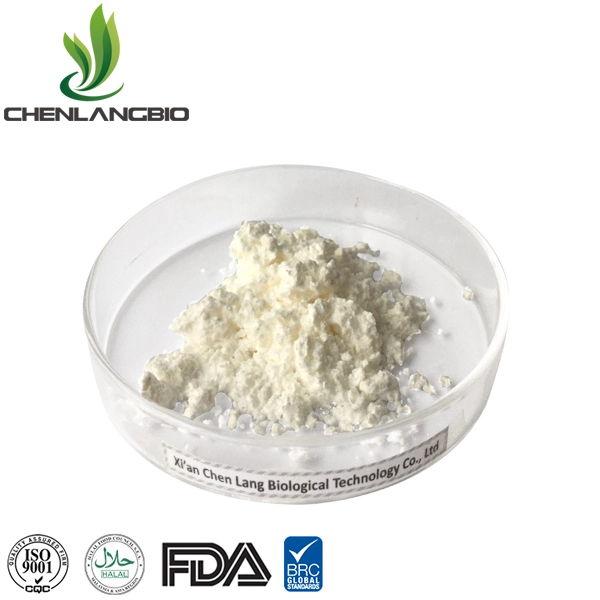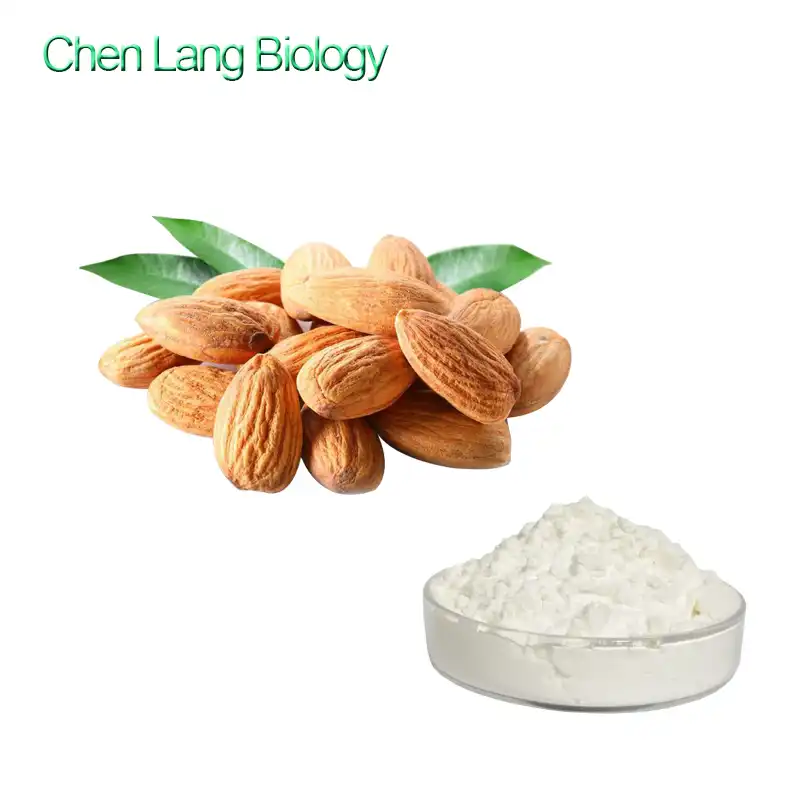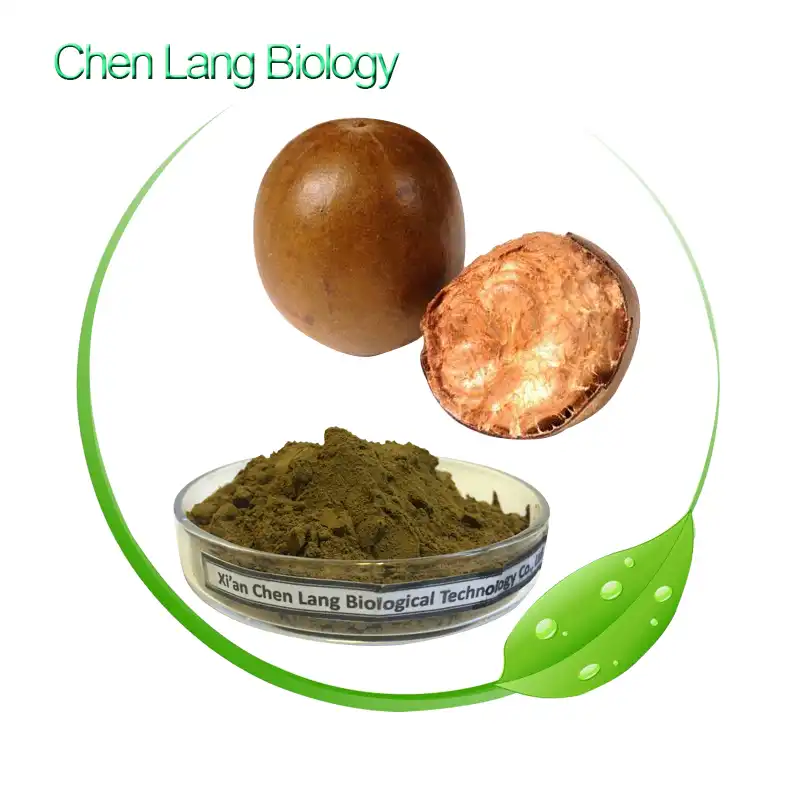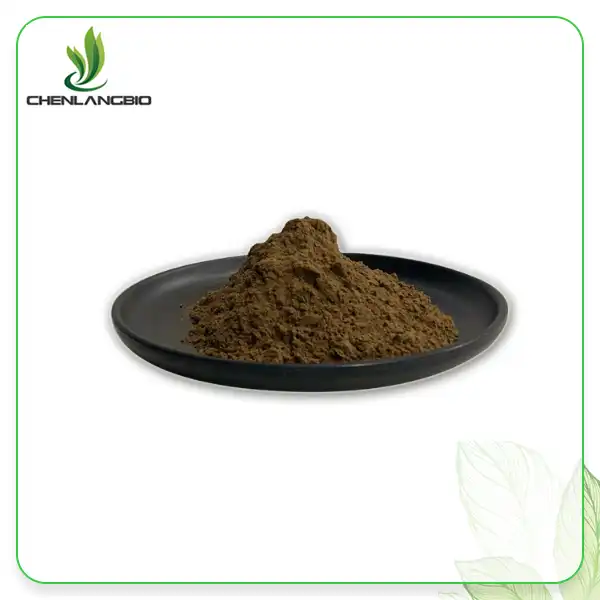What is Ectoine in Eye Drops
2024-09-30 10:00:31
The normal compound ectoine, which can be tracked down in outrageous microorganisms, has gotten a great deal of consideration in the area of ophthalmology in view of the potential advantages it could have for eye care. This blog post examines its unique properties, the ways in which it aids in eye health maintenance, and its function in eye drops. We will investigate its application in eye care products, its effects on various eye diseases, and its scientific foundations. This comprehensive guide will provide you with valuable insights whether you are looking for cutting-edge ophthalmic treatments or novel approaches to eye care.
Understanding Ectoine: Nature's Protective Molecule
The Origin and Discovery of Ectoin
The product, a remarkable organic compound, was first discovered in halophilic bacteria thriving in extreme salt environments.As a natural response to harsh conditions like high salinity and extreme temperatures, these microorganisms produce it. Researchers have been intrigued by its capacity to safeguard cellular structures and maintain their functionality under stressful conditions.
Chemical Structure and Properties of Ectoin
Chemically, Ectoin is a cyclic amino acid derivative with the molecular formula C6H10N2O2.Because of its unique structure, Ectoin can interact with water molecules to form a protective hydration shell around proteins and other cellular components. This property, known as preferential exclusion, is key to its effectiveness in preserving biological structures.
Its Mechanism of Action
The protective effect of the Ectoin stems from its ability to stabilize cell membranes and proteins. It helps these structures maintain their natural conformation and functionality even under stress by forming a hydration layer around them. Because of this mechanism, it is now used in a number of different industries, particularly the pharmaceutical, eye care, and skincare industries.
Ectoine in Eye Drops: A Revolutionary Approach to Ocular Health
The Need for Advanced Eye Drop Formulations
Traditional eye drops often provide temporary relief but may not address the underlying causes of ocular discomfort. The incorporation of Ectoin into eye drop formulations represents a paradigm shift in eye care, offering a more comprehensive approach to maintaining ocular health and comfort.
How it Enhances Eye Drop Efficacy
To form a protective film on the surface of the eye, the eye drops make use of the distinctive properties of the compound. The ocular surface is protected from environmental stressors, inflammation is reduced, and moisture is retained thanks to this film. The end result is a tear film that is more stable and more comfortable for people with dry eye syndrome and other ocular surface disorders.
Biocompatibility and Safety of Ectoin in Ophthalmic Use
One of the key advantages of Ectoin in eye drops is its high biocompatibility. Because Ectoin is a naturally occurring substance, the product is well tolerated by the human body and rarely causes adverse reactions. As a result, it's a great option for people with sensitive eyes or long-term eye care needs.
Benefits and Applications of Ectoine-Based Eye Drops
Ectoine-based eye drops are a good option for people who are having problems with their eyes because they have a lot of advantages. Ectoin, a natural substance known for its hydrating and protective effects, has a number of important effects on eye health.
- Hydration: Ectoine-based eye drops help to alleviate the dryness and discomfort that are frequently brought on by prolonged screen use or environmental factors. These drops also provide exceptional moisture to the eyes. These drops help keep moisture in the eye and hydrate it for a long time because they form a protective layer on the surface.
- Protection: These eye drops safeguard against outside aggravations and oxidative pressure. Ectoin reduces the impact of pollutants and allergens, which can cause eye irritation and inflammation, by stabilizing cellular structures.
- Anti-Inflammatory: Ectoin's anti-inflammatory properties aid in relieving eye irritation. This is especially helpful for people who have dry eye syndrome or allergic conjunctivitis, which are common conditions in which inflammation is a symptom.
- Comfort: By reducing symptoms like itching, burning, and redness, ectoin-based eye drops improve overall comfort. A more comfortable and refreshing experience is made possible by the moisturizing and protective effects.
In conclusion, ectoin-based eye drops improve comfort and protect the eyes while providing effective relief from dry, irritated, and inflamed conditions.
Scientific Evidence Supporting its Efficacy in Eye Care
Clinical Studies on Ectoine-Based Eye Drops
Numerous clinical studies have been conducted to evaluate the efficacy of Ectoin in ophthalmic applications. These studies have consistently demonstrated positive outcomes in terms of symptom relief and improvement in ocular surface health. In patients with dry eye disease, a randomized, double-blind study published in the Journal of Ocular Pharmacology and Therapeutics found that the eye drops significantly improved tear film stability and decreased ocular surface inflammation.
Comparative Analysis with Traditional Eye Drop Formulations
When compared to conventional eye drop formulations, the Ectoine-based solutions often show superior long-term efficacy and patient satisfaction. Drops outperformed standard artificial tear solutions in terms of quality of life scores and sustained relief from dry eye symptoms, according to a comparison study that was published in the European Journal of Ophthalmology. These findings underscore the potential of it as a game-changing ingredient in ocular care.
Ongoing Research and Future Prospects
In the field of ophthalmology, ongoing research is looking into how ectoin might be used to treat more difficult ocular conditions. The topic of current research is the creation of multifunctional eye care products that combine it with other active ingredients. As a protective agent during ocular surgery and for preserving corneal tissue for transplantation, researchers are also investigating its application.
Choosing and Using Ectoine-Based Eye Drops
Identifying Quality Ectoine Eye Drop Products
When selecting the eye drops, it's crucial to choose products from reputable manufacturers that adhere to strict quality control standards. Look for eye drops that list Ectoin as a primary active ingredient and check for additional beneficial components such as hyaluronic acid or vitamins that can complement its effects. It's also advisable to opt for preservative-free formulations, especially for frequent use or if you have sensitive eyes.
Proper Application Techniques for Maximum Benefit
To maximize the benefits of the products, proper application is essential. Start by washing your hands thoroughly to prevent contamination. Tilt your head back slightly and gently pull down your lower eyelid to create a small pocket. Make sure not to touch your eye or any other surface as you squeeze out one or two drops using the dropper that is held above your eye. Close one eye gently and press on the inner corner of your eyelid for about a minute to prevent the drops from draining too quickly.
Integrating Ectoine Eye Drops into Your Eye Care Routine
For optimal results, incorporate eye drops into your daily eye care routine. Many users find that applying the drops 2-3 times a day provides consistent relief and protection. However, it is essential to adhere to the product's specific instructions or those of your eye care professional. Consult your doctor about the best way to incorporate the drops into your regimen to avoid potential interactions if you are taking other eye medications.
Potential Side Effects and Precautions
otential Side Effects
- Mild Irritation: Some users may experience a slight burning or stinging sensation upon application. This is usually temporary and should subside shortly after the eye drops are applied.
- Redness: In rare cases, Ectoine eye drops might cause temporary redness of the eyes. This is often due to the adjustment period as the eye becomes accustomed to the drops.
- Allergic Reactions: Although uncommon, some individuals may have an allergic reaction to Ectoin or other ingredients in the eye drops. Symptoms could include itching, swelling, or more severe reactions. If these symptoms occur, it is advisable to discontinue use and consult a healthcare professional.
Precautions
- Consult a Professional: Before starting any new eye drop regimen, including those containing ectoin, it is important to consult with an ophthalmologist or healthcare provider, especially if you have pre-existing eye conditions or are using other eye medications.
- Check for Allergies: Ensure that you are not allergic to Ectoin or any other components of the eye drops. Reading the ingredient list carefully and discussing it with your doctor can help avoid potential allergic reactions.
- Avoid Contamination: To prevent contamination, avoid touching the tip of the eye drop bottle with your fingers or any other surface. Always use the drops as directed and store them properly.
- Follow Dosage Instructions: Adhere to the recommended dosage and frequency of application. Overuse or misuse of eye drops can lead to adverse effects or reduced efficacy.
Conclusion
Ectoine in eye drops represents a significant advancement in ocular care, offering a natural and effective solution for various eye-related issues. Its unique properties provide enhanced protection, hydration, and comfort for the eyes, making it a valuable option for those seeking relief from dry eye syndrome and other ocular surface disorders. As research continues to unveil the full potential of it in ophthalmology, we can expect to see more innovative applications of this remarkable compound in the future of eye care. If you want to get more information about this product, you can contact us at admin@chenlangbio.com.
References
1. Bilstein, A., et al. (2016). "Ectoine-containing eye drops in the treatment of dry eye disease." Journal of Ocular Pharmacology and Therapeutics.
2. Graf, R., et al. (2008). "The multifunctional role of ectoine as a natural cell protectant." Clinics in Dermatology.
3. Kolb, H., et al. (2007). "Webvision: The Organization of the Retina and Visual System." University of Utah Health Sciences Center.
4. Lentzen, G., & Schwarz, T. (2006). "Extremolytes: Natural compounds from extremophiles for versatile applications." Applied Microbiology and Biotechnology.
5. Moschos, M. M., et al. (2017). "The role of ectoine in the treatment of dry eye disease." Clinical Ophthalmology.
6. Werkhäuser, N., et al. (2014). "Treatment of dry eye syndrome with ectoine-containing artificial tears." Cornea.
Send Inquiry
Related Industry Knowledge
- The Ultimate Guide to Tart Cherry Extract Powder
- Witch Hazel Leaf Extract: An All-Natural Beauty Essential
- Is Camellia Oleifera Seed Extract Safe for All Skin Types
- What Foods Contain Ergothioneine
- Does Alpha-GPC Make You Stronger
- What Are The Benefits Of Using Bakuchiol In Skincare?
- Is Centella Asiatica Extract Powder Good for Skin
- How to Use Aloe Vera Gel Freeze-Dried Powder
- What is Saw Palmetto Extract Powder Used for
- Sepiwhite MSH Powder for Sale










